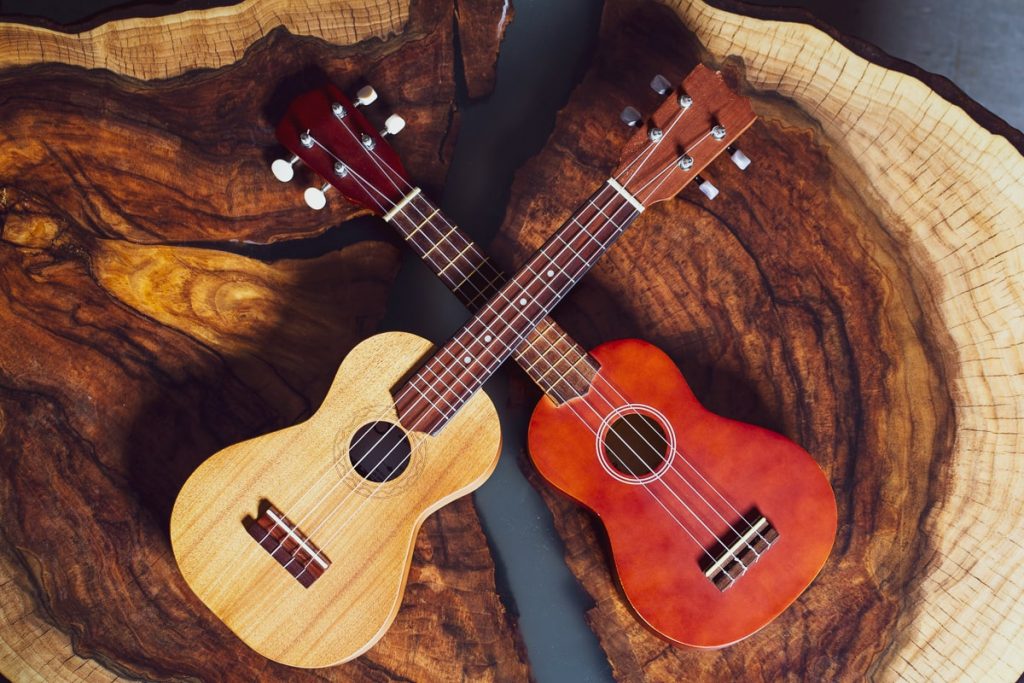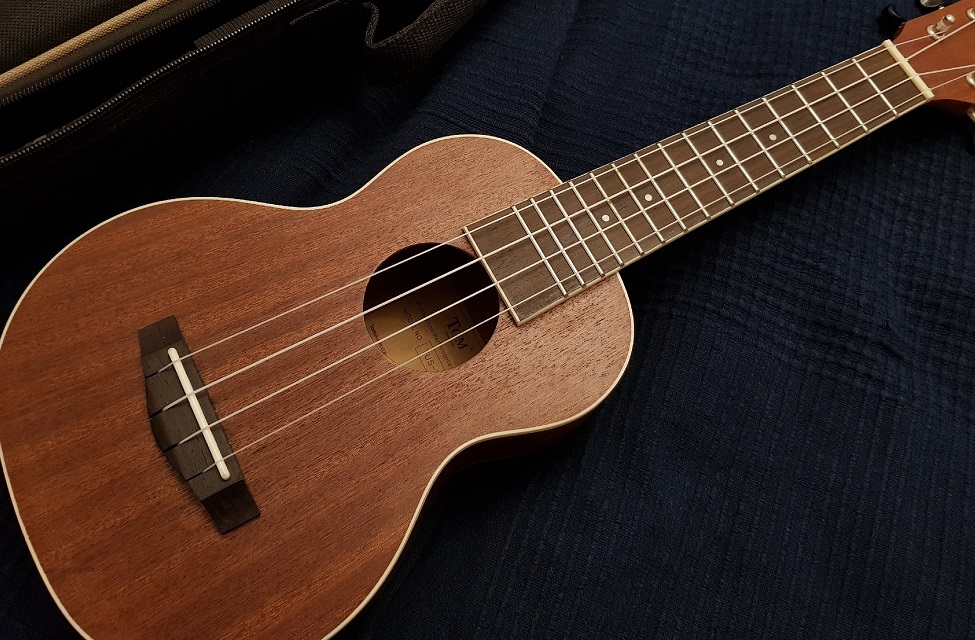Difference between electric and acoustic-electric ukes
| Electric |
Acoustic-electric |
- Solid body
- Plugged play
- No electronic components
- Steel strings
- Active or magnetic pickup
- Optimizes projection and sustain
- Best for amplified sound
|
- Hollow body
- Plugged and unplugged play
- Electronic components
- Nylon or gut strings
- Built-in passive pickup
- Optimizes resonance
- Best for acoustic sound
|
Features to consider before buying an electric/acoustic-electric ukulele
 Before you whip out that credit card to buy the best electric or acoustic-electric ukulele, there are important features you should consider for a playable instrument with high output at an affordable cost.
Before you whip out that credit card to buy the best electric or acoustic-electric ukulele, there are important features you should consider for a playable instrument with high output at an affordable cost.
Type
Electric ukuleles are available in two types: solid body electric and acoustic-electric.
Acoustic-electric like the Oscar Schmidt OU7TE and the Cordoba 15CM-E feature a hollow body with more resonance and are equipped with electronic components and a built-in pickup that detects sound and converts it to electrical impulses which can be amplified with an external amp or PA. Since they have a pickup integrated in the instrument and a soundhole for acoustic sound and resonance, you can play acoustic-electric ukuleles with or without amplification.
On the other hand, solid body electric models such as the Mahalo EUK-200 and the Aileen SG Style Electric Ukulele need to be plugged into an amp for audibility because they don’t’ have soundholes and rely on pickups instead. Otherwise, the sound is minimal when unplugged, which could actually be advantageous for quiet practice.
Most pickups are made from piezo, which converts string vibrations to an electric signal without a magnet and can work with nylon-stringed ukuleles instead of magnetic pickups, which require steel strings for induction to create an electric signal. The Flight Electric Ukulele uses the latter kind of pickup.
Pickups can be active or passive.
An active pickup has an integrated preamp powered by batteries to balance and boost the electric signal for a plug-and-play sound. Active pickups include a battery, auxiliary input, and a headphone jack for versatile play. The preamp may come with volume control and tone equalizer for bass, mid-range, and tenor so you can tweak the sound to your preference before amplification.
A passive pickup sends a raw signal from the strings to the output jack to produce a more natural sound with a wider dynamic range. It needs an external power source to boost this signal. The external preamp in passive-style ukuleles provides more sound options because, unlike built-in preamps, it is not limited by size or weight and can accommodate complicated circuitry. There is also less chance of wires touching the wood and causing fret buzz. Lastly, you don’t have to worry about batteries for the preamp, and fewer electronics reduce the overall weight of your ukulele.
Size
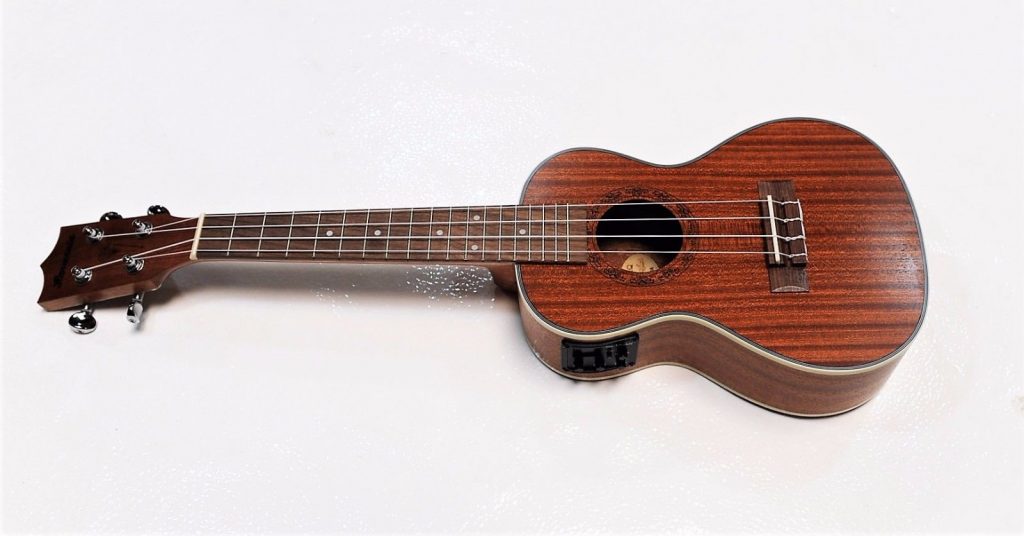 Ukuleles mainly come in four sizes, which dictate the scale length and the range of tones. These are soprano, concert, tenor, and baritone.
Ukuleles mainly come in four sizes, which dictate the scale length and the range of tones. These are soprano, concert, tenor, and baritone.
Soprano models like the Aileen SG Style Electric Ukulele are the smallest, cheapest, and most popular type among ukulele players because they are the closest you can get to the traditional ukulele sound. They measure 21 inches long with a scale length of 13 inches and 12 to 15 frets.
The next size up is the concert ukulele, which features an overall length and scale length of 23 and 15 inches, respectively. It has a similar sound to the soprano but is deeper, fuller, and louder, with 15 to 20 frets providing a wider range. Examples on our list include the Vangoa UK-23ZE and the Cordoba 15CM-E.
Featuring a scale length of 17 inches and a minimum of 15 frets, the 26-inch long tenor ukulele is larger than soprano and concert models and provides more room for you to extend your range and learn complicated chords. The best electric tenor ukulele models, like the Flight Electric Ukulele and the Oscar Schmidt OU7TE include a lower G string in addition to the high G string used in soprano and concert models to produce a deep, rich sound.
The largest type is baritone ukulele, which features DGBE tuning similar to the four highest guitar strings, unlike the standard GCEA tuning used by the other types of ukuleles. This makes it the most suitable type for guitarists making their foray into ukuleles. With a scale length of 19 inches and at least 20 frets providing an extensive range of tones, the low registers of the 30-inch baritone ukuleles, such as the Caramel CB904, produce deeper and warmer tones with more resonance.
Body material
Various types of wood are used in ukulele construction for their tonal and decorative properties. Their composition affects the tone as much as the ukulele size and shape, type of string, soundhole, bracing pattern, and tuning. The wood used for aesthetic purposes sports unique natural patterns and hues, adding character to the ukulele.
The popular types of wood found on the body of ukuleles are mahogany, rosewood, maple, spruce, koa, cedar, walnut, and ebony. Mahogany, featured in the Ellen Electric Concert Ukulele with Amp and the MAHALO EUK-200, is light, stable, and loud with an emphasized midrange which produces darker and warmer tones with even resonance. The stiffness and low weight of spruce make it a favorite tonewood for ukulele tops because it generates a dynamic range of vibrant, consistent, and articulate techniques. Strummers and finger stylists prefer the responsive cedar in steel-stringed ukuleles for warmer and more controlled amplification. It is often used in larger ukuleles, which require more depth and fuller sound. Ebony, featured in the Caramel CB904, produces sharp and bright tones, and the smaller grain creates a smooth appearance, increasing playability. Lastly, the iconic Koa initially has bright, crisp tones, which develop more richness and resonance as the wood ages. Since it is becoming scarce, you will typically find inexpensive, customized, and professional models.
Examples of wood with natural patterns and exotic grain appearance are Koa, the zebrawood in the Vangoa UK-23ZE, and the spalted mango in the Oscar Schmidt Ukulele OU7TE.
Models like the Aileen SG Style Electric Ukulele and the Mahalo EUK-200 use solid wood, producing richer and more resonant tones as they grow.
Inexpensive ukuleles also incorporate laminate wood and plastic because they are less likely to warp or crack and reduce cost. However, they produce a dull, hollow sound and best suit children.
Ukuleles either use one material on the entire body, such as the all-laminate mahogany construction of the top, back, and sides of the Cordoba 15CM-E, or different types of material for various body parts.
Fretboard material
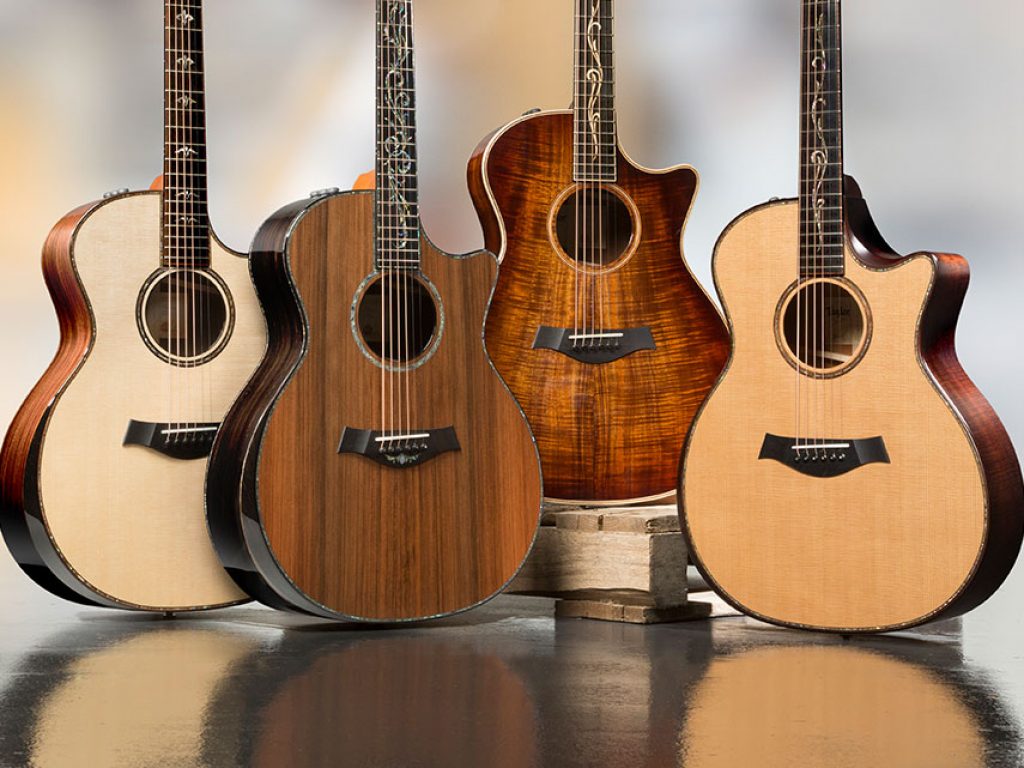 Fretboards should be sturdy enough to withstand string tension. The most common material for ukulele fretboards is the versatile rosewood, which deepens lower tones and brightens higher ones to generate a well-balanced sound. Half of the models recommended for the best cheap electric ukulele incorporate this material in their fingerboards. These are the Ellen Electric Concert Ukulele with Amp, the Cordoba 15CM-E, the Aileen SG Style Electric Ukulele, and the Mahalo EUK-200.
Fretboards should be sturdy enough to withstand string tension. The most common material for ukulele fretboards is the versatile rosewood, which deepens lower tones and brightens higher ones to generate a well-balanced sound. Half of the models recommended for the best cheap electric ukulele incorporate this material in their fingerboards. These are the Ellen Electric Concert Ukulele with Amp, the Cordoba 15CM-E, the Aileen SG Style Electric Ukulele, and the Mahalo EUK-200.
Other types of fingerboard material featured in this review include maple in the Flight Electric Ukulele and walnut in the Vangoa UK-23ZE and the Caramel CB904.
Saddles and nuts are made of rosewood, walnut, graphite, ebony, bones, brass, and plastic. The type of material used for nuts will influence their weight and texture, and subsequently, the tuning, sustain, and resonance of the sound.
Finish
Usually, gloss and satin are used for ukulele finishes to protect the wood underneath from moisture and other natural elements, improve the appearance, and mask inferior wood and other defects in low-quality ukuleles.
Satin finish reflects more light than it absorbs, letting the wood retain a natural appearance. Since it does not require polishing and buffing, a satin finish is more affordable because its application takes less effort. On the other hand, gloss reflects light, and the shiny shimmer accentuates the wood’s color, texture, and pattern. It is durable and more protective than satin but prone to fingerprints.
Finishes may affect the overall tone by suppressing the tonal properties of the wood underneath and limiting vibrations and volume. However, satin and gloss finishes have minimal effect on tone as long as the applied layer is thin.
Accessories included
The number and type of accessories your ukulele includes vary according to the individual model. For instance, the Oscar Schmidt OU7TE does not come with any accessories, the Cordoba 15CM-E includes a tuner and gig bag, and the Ellen Electric Concert Ukulele comes in a package with a comprehensive starter kit comprising of an audio cable, padded storage case, strap, tuner, spare set of nylon strings, Hawaii picks, amp, AC adapter and batteries for the amp and the tuner, as well as one 9V Lithium metal battery and two 3V CR2032 batteries.
Generally, the most common accessories are tuners, extra strings, cables, batteries, picks, straps and gig bags, and cases.
Extra features
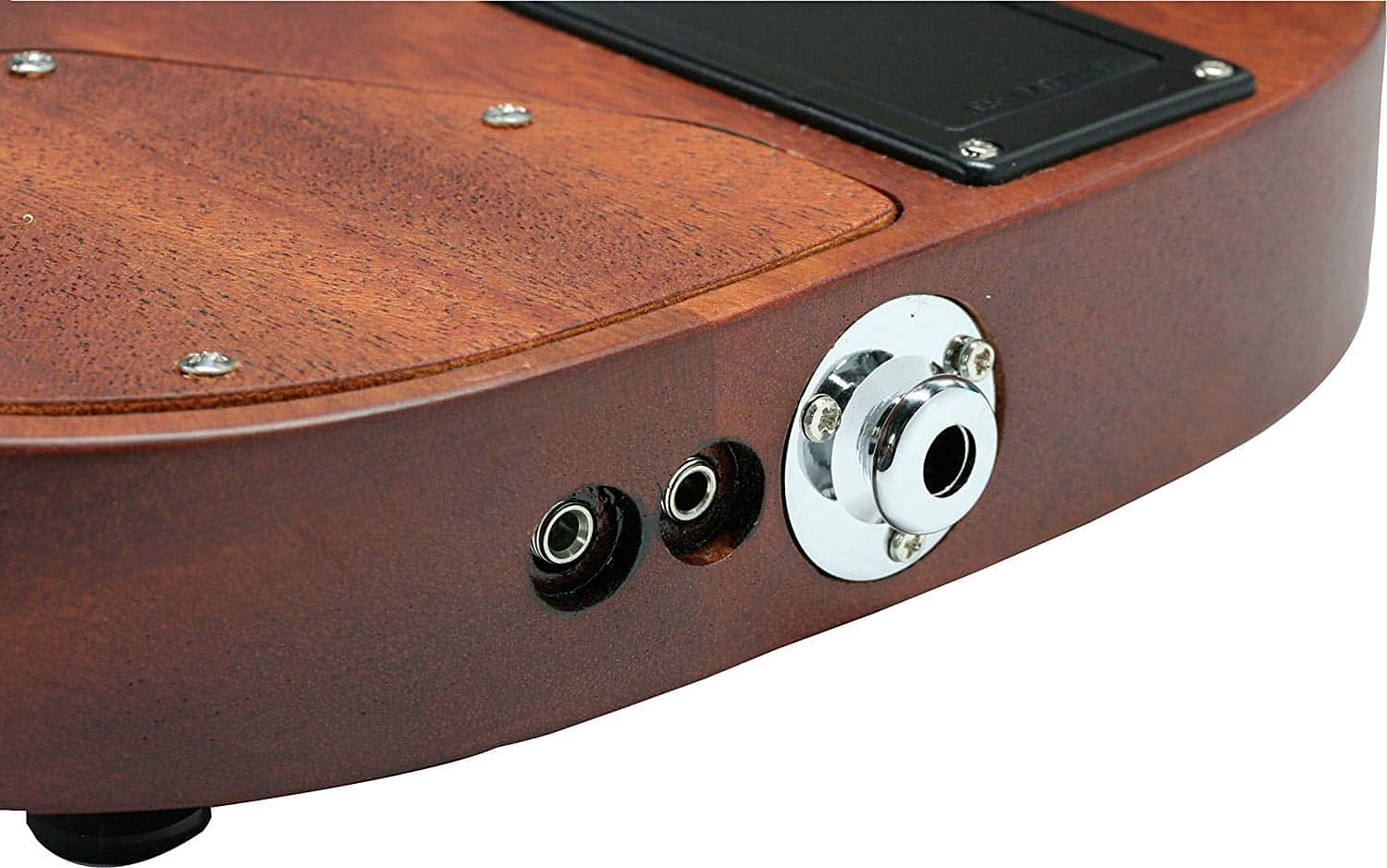
Money back guarantee: This is usually a 30-day offer that allows you to test your ukulele before making your final decision. It is included as an incentive in addition to the warranty, which varies from model to model.
Design: Even the best cheap electric ukuleles come in various colors, patterns, and adornments, adding to the aesthetics. This may be in the form of the natural hue and pattern of the tonewood used, inlays of dots and other shapes for easy navigation and differentiation of notes, and a rosette around the soundhole and binding.
Built-in tuner: They are integrated into the preamp to allow sound modification before it is sent to the amplifier. The Ellen Electric Concert Ukulele and the Caramel CB904 acoustic-electric ukulele feature are equipped with onboard chromatic tuners with volume and tone controls and an LCD backlit display that shows the sharpness and flatness of the note playing. Some tuners allow silent tuning, which is convenient when performing live.
Cutaway: A cutaway design allows easier access to high notes and complex chords for advanced play.
Smooth frets: The edges should be smooth and filed to avoid hurting your fingers as they slide along the fingerboard.
Adjustable saddle height: Look for a bridge saddle that can be removed, replaced, or repositioned to raise and lower action for correct intonation.
Adjustable truss rod: The Caramel CB904 comes with an adjustable truss rod and a wench to straighten neck curvature by adjusting string tension, and a
Strap button: It offers additional support when playing the ukulele. The amp cord for the Oscar Schmidt OU7TE doubles up as a strap button.
What you need to play an electric/acoustic-electric ukulele?
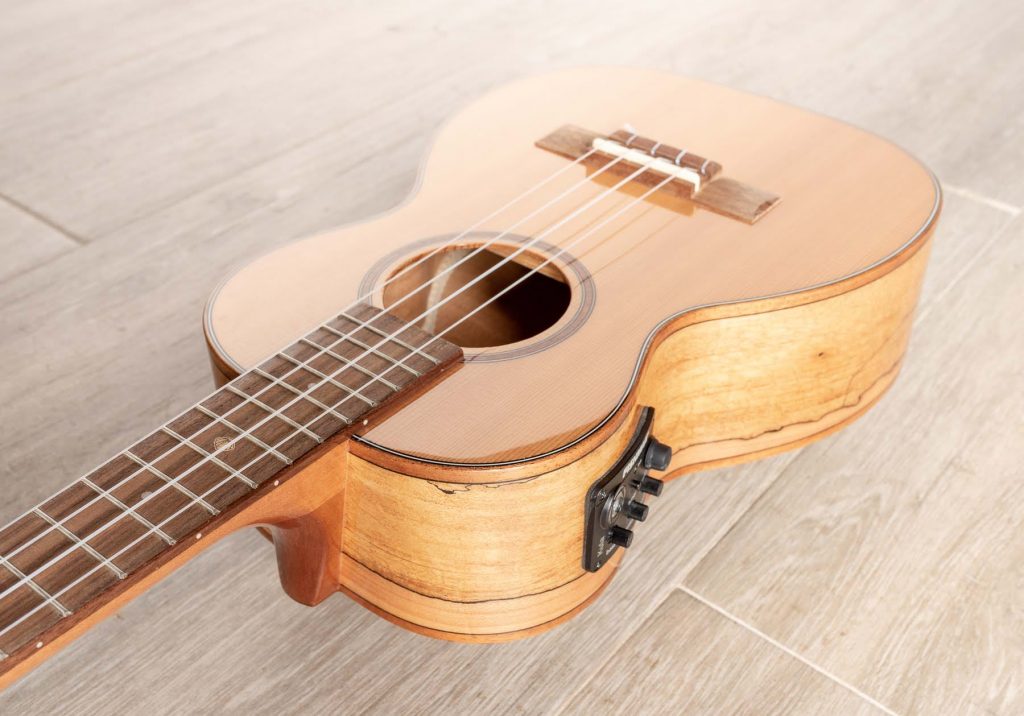
For a successful live performance, you will need to plug in your ukulele to project sound that is well-balanced and free of background noise. To achieve this with an electric or acoustic-electric ukulele, you will need a pickup, preamp, tuner, and amplifier or PA system to tweak, boost, and amplify the sound.
Pickups: Pickups convert string vibrations to electric signal which can be amplified. Built-in pickups are available in form of passive piezo which transmits the raw signal to the output jack and is the most common, active pickup which includes an onboard preamp to boost and modify the electric signal before it is amplified for a better sound, and electromagnetic pickup which is compatible with steel-stringed electric ukuleles.
Preamp: In addition to boosting the signal, the battery-powered onboard preamps also have controls for volume and tone, and may include a built-in tuner and 3-band frequency equalizer. Built-in preamps are convenient in shaping sound before amplification, and the pickup prevents feedback but if you prefer the authentic acoustic ukulele sound, consider an external preamp pickup that attaches to your ukulele.
Tuners: They enable you to configure the sound to your liking by adjusting the volume and tone of various frequencies and displaying the pitch of the note playing. Some allow silent tuning, which is convenient when performing live.
Amplifier: They have features designed to optimize output in a specific instrument such as a guitar, acoustic instrument, or keyboard. These features include tuners, output jacks for microphones and headphones, and sound effects such as delays, distortion, and reverbs. Look for an amplifier with more headroom for a clean signal so you crank up the volume without worrying about distortion. An amp with higher wattage will usually be louder and more powerful.
Cable: To connect the pickup output jack to the amplifier.






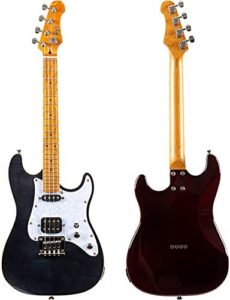


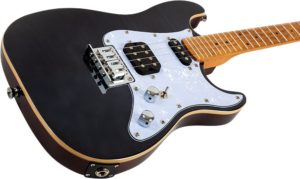
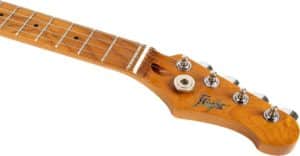

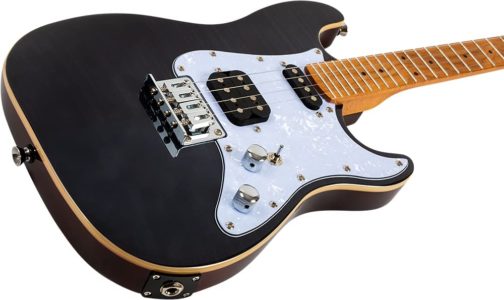
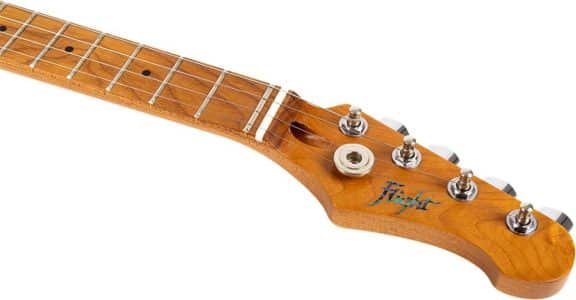

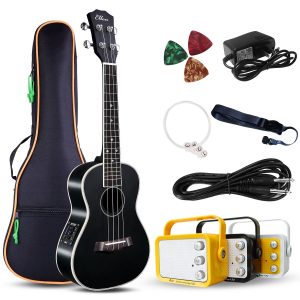
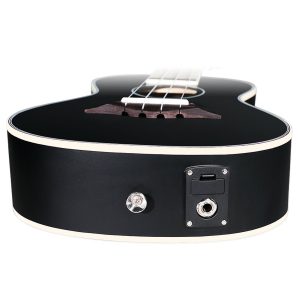
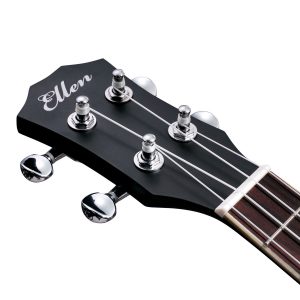

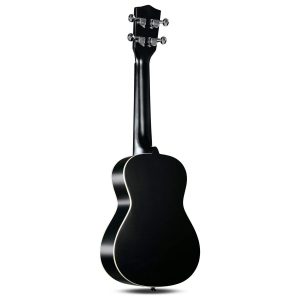
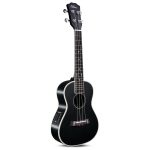


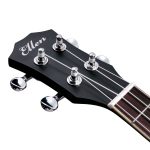
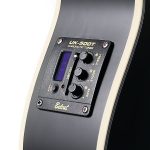
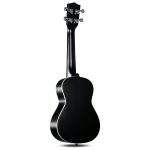
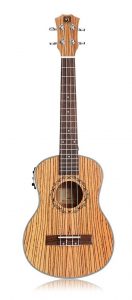
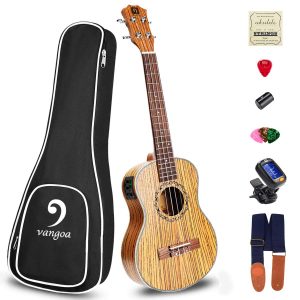
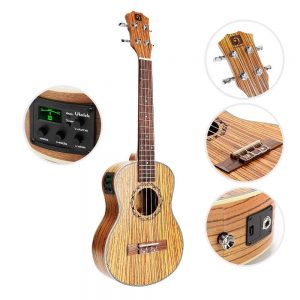
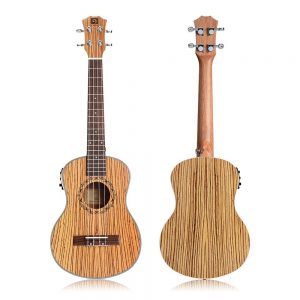

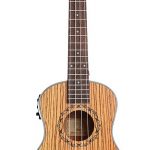

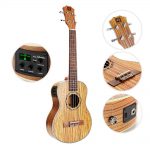


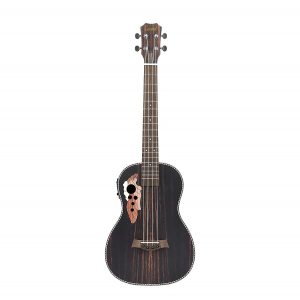
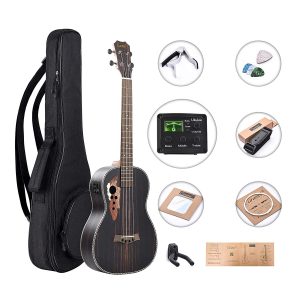


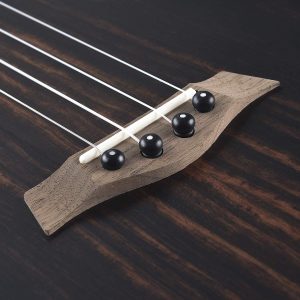
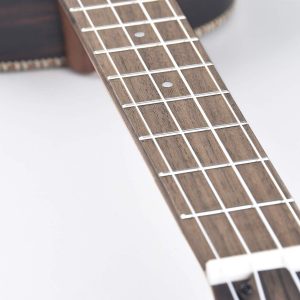
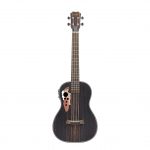



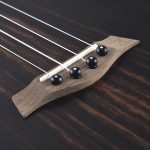
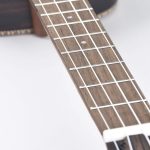

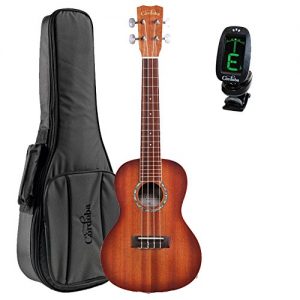
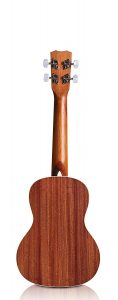
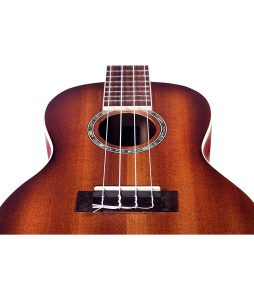
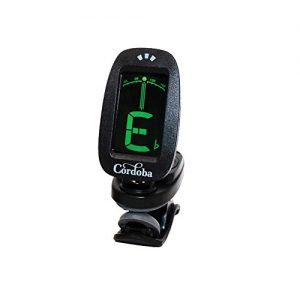
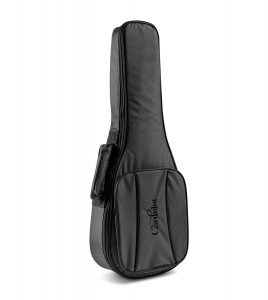
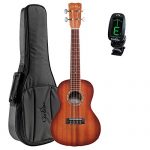
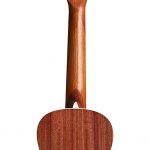
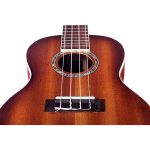


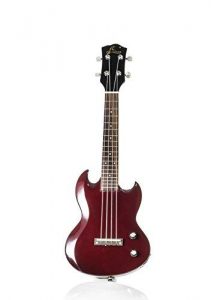
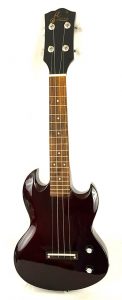

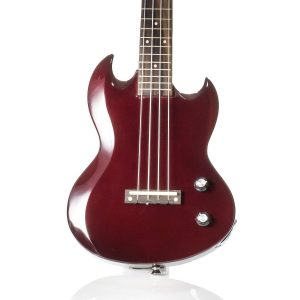

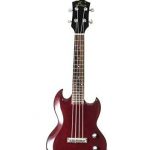
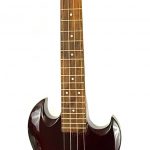

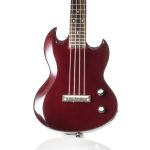


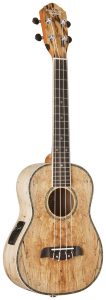
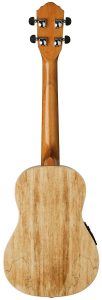
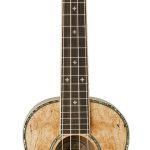
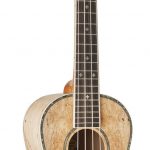


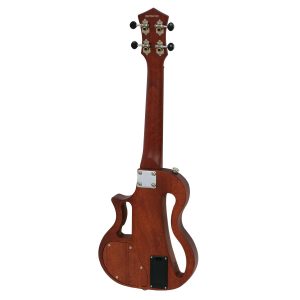
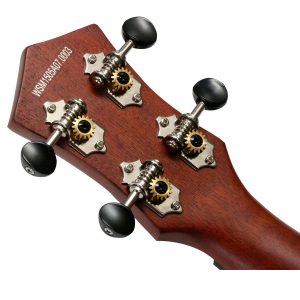

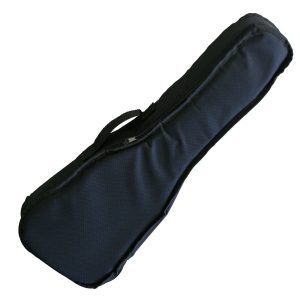
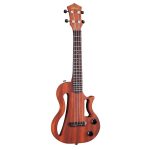
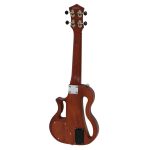
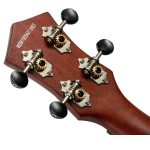
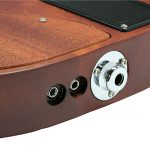
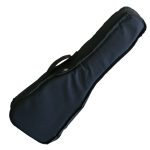
 Before you whip out that credit card to buy the best electric or acoustic-electric ukulele, there are important features you should consider for a playable instrument with high output at an affordable cost.
Before you whip out that credit card to buy the best electric or acoustic-electric ukulele, there are important features you should consider for a playable instrument with high output at an affordable cost. Ukuleles mainly come in four sizes, which dictate the scale length and the range of tones. These are soprano, concert, tenor, and baritone.
Ukuleles mainly come in four sizes, which dictate the scale length and the range of tones. These are soprano, concert, tenor, and baritone. Fretboards should be sturdy enough to withstand string tension. The most common material for ukulele fretboards is the versatile rosewood, which deepens lower tones and brightens higher ones to generate a well-balanced sound. Half of the models recommended for the best cheap electric ukulele incorporate this material in their fingerboards. These are the
Fretboards should be sturdy enough to withstand string tension. The most common material for ukulele fretboards is the versatile rosewood, which deepens lower tones and brightens higher ones to generate a well-balanced sound. Half of the models recommended for the best cheap electric ukulele incorporate this material in their fingerboards. These are the 






